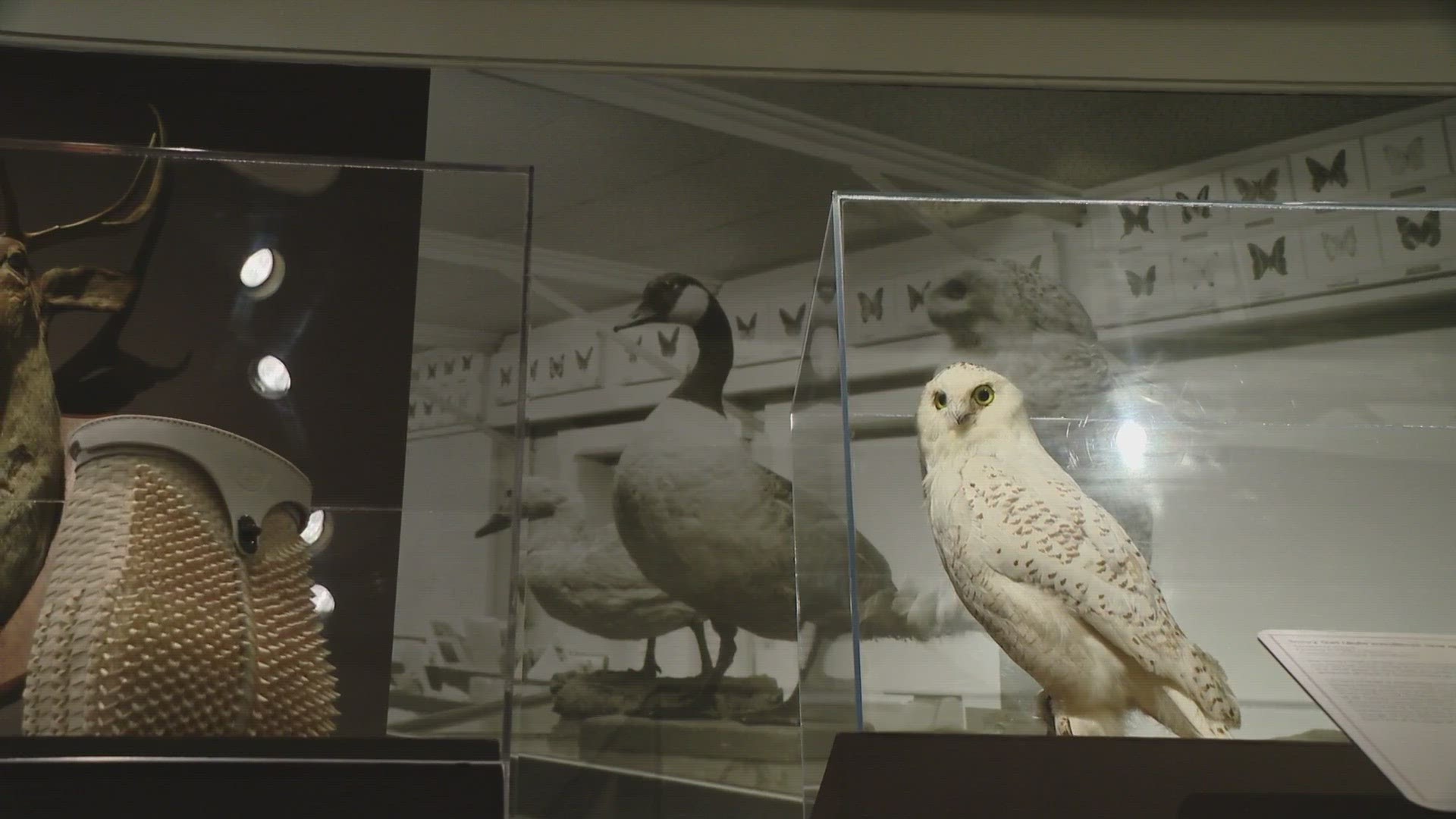PORTLAND, Maine — Did you know that seagulls almost went extinct in recent history? Or that fashion trends in the 18th century almost wiped out the beaver completely?
These are just a couple of the topics explored in a new exhibit at the Maine Historical Society called "CODE RED: Climate, Justice & Natural History."
The exhibition was created by MHS curator Tilly Laskey and University of Maine professor Darren Ranco. It centers around climate change and the impact humans have had on our planet, but it also highlights pieces that once belonged to the Portland Society of Natural History, like moon rocks and a dinosaur footprint, that have not been together in the same space for five decades.
"[The Portland Society of Natural History was] one of the first natural history societies in the nation and they rivaled places like Harvard and Yale as far as their collections went," Laskey said. "They started in 1839, ended in 1972, and had seven different locations. They disbanded once, they burned down twice, and they rebuilt their collections every single time that happened until they eventually closed in 1972 and their collections went all over the globe."
"CODE RED" features an array of displays from preserved butterflies to different bird species to an entire room dedicated to Sen. Ed Muskie and the Clean Water Act, which was a piece of legislation that changed the way we take care of the natural resources around us, and played a huge role in preserving the Androscoggin River.
"It allows people to explore all kinds of different objects in an exhibit that sort of says, 'You know, this is how we used to collect things, this is how we used to think about past climates, let's think together in terms of what this future climate could be,'" Ranco said.
The exhibit also explores Indigenous methods of studying the world around us. At the very center of the exhibit is a woven basket detailed to look like a snowy owl placed strategically next to a preserved, stuffed snowy owl.
"To see that basket almost have this dialogue with the actual preserved snowy owl is really interesting," Ranco said. "For us and as Wabanaki people, our caretaking responsibilities was always not separate from those animals, whereas the natural history approach was to stuff it and put it under glass, you know, like that's such a different orientation."
Laskey and Ranco said they hope "CODE RED" not only educates people about the climate crisis but encourages them to think differently and maybe even take action.
"I really hope that people feel like they're empowered to make a difference in their life and to make a difference to climate change and biodiversity loss," Laskey said. "That they feel they have enough information to be able to make a difference in the world."
"CODE RED: Climate, Justice & Natural History" is now open to the public and can be viewed in person or online through the end of the year. To learn more about MHS and the exhibit, click here.
Watch the full 207 video above for a behind-the-scenes look at the exhibit and to hear more from the creators.

